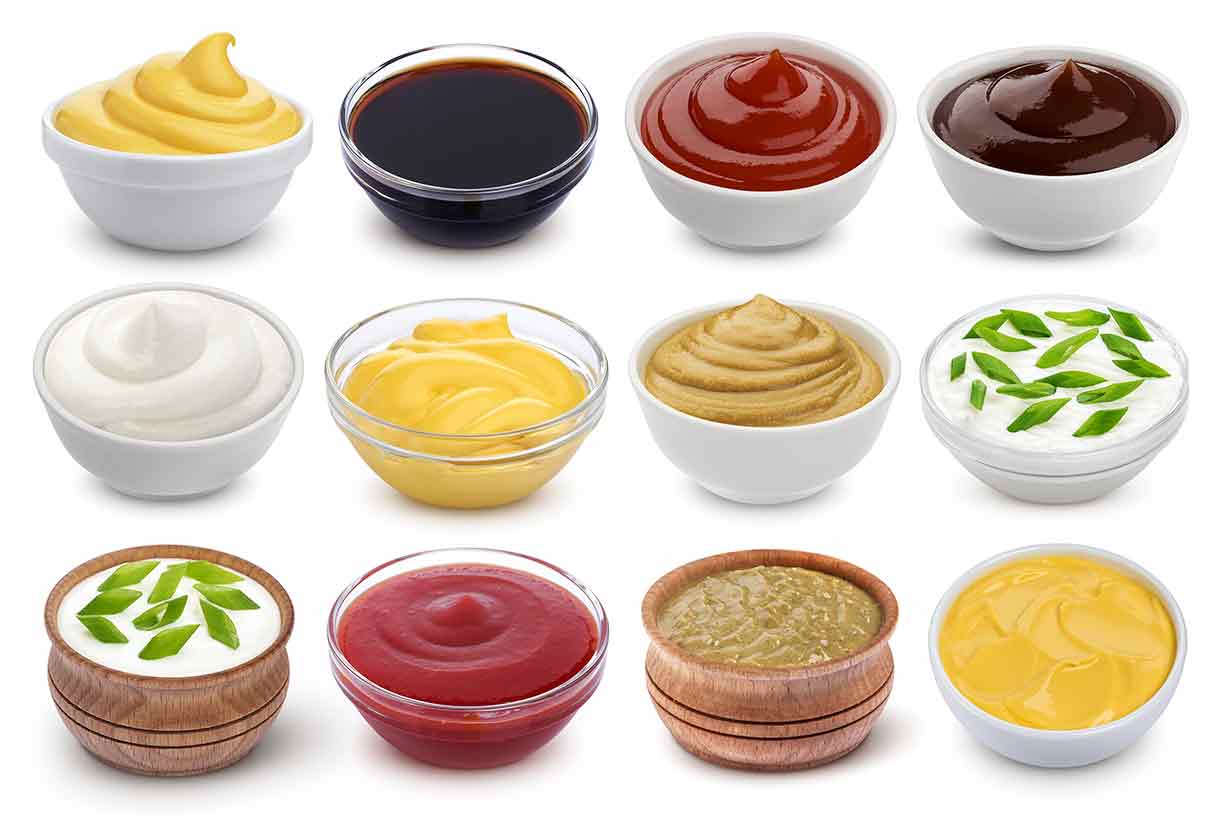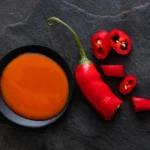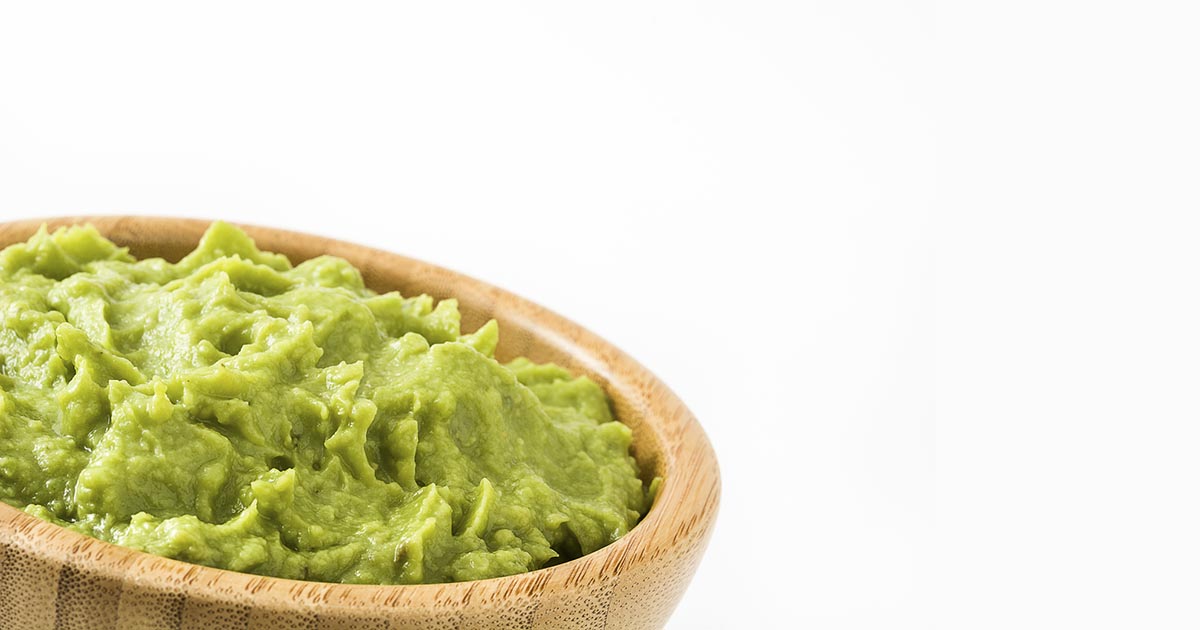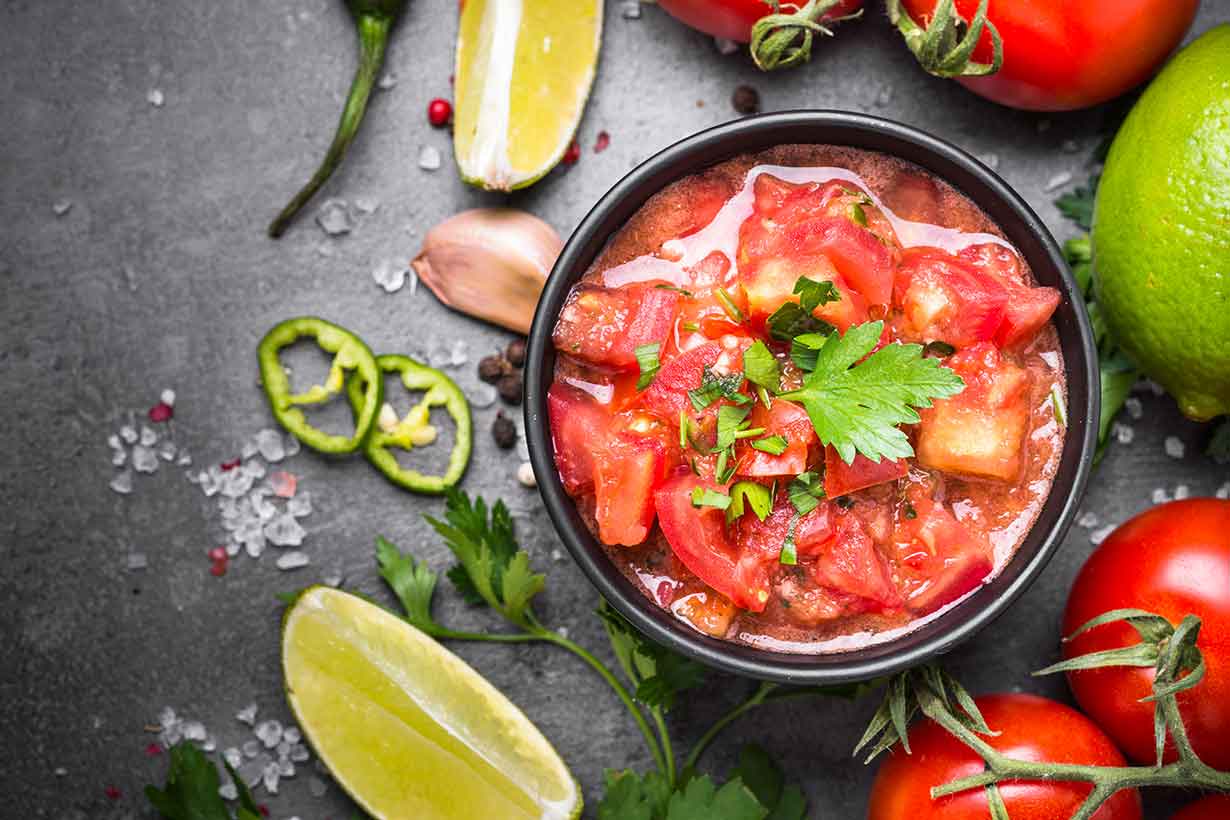Disclosure: This post may contain affiliate links. This means if you click on one of these links and purchase an item, we will receive a small commission at no extra cost to you. All opinions are our own.
Ponzu sauce is a popular Japanese condiment characterized by its citrusy flavor and aroma.
It is a versatile and flavorful condiment that can be used in a wide variety of dishes.
This article examines the characteristics, nutritional values, and typical uses of ponzu sauce.
Table of contents
What Is Ponzu Sauce?
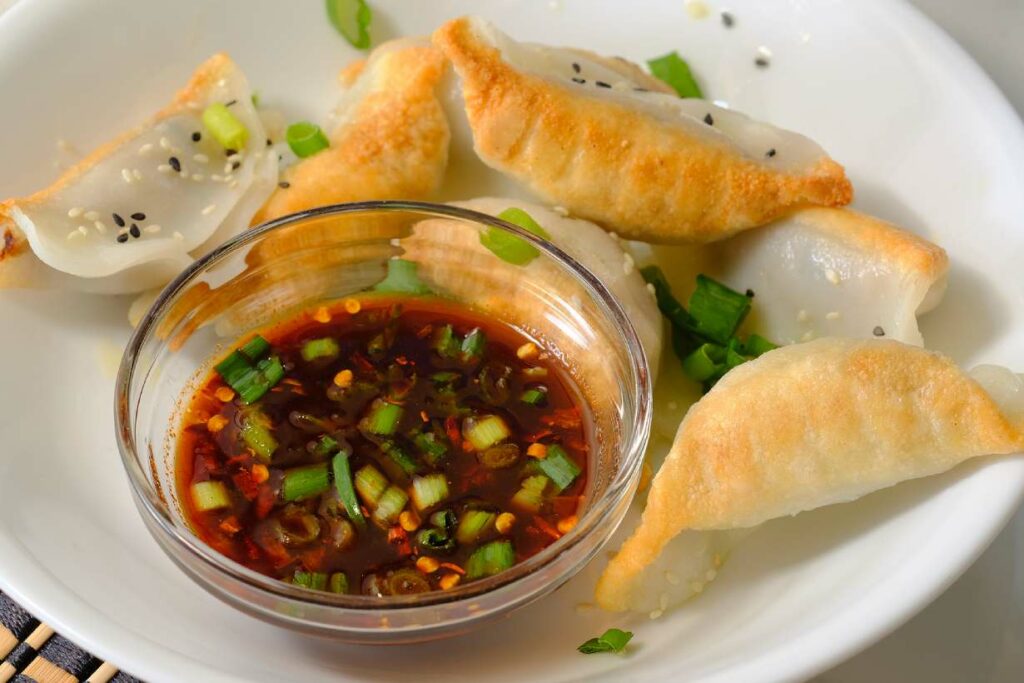
Ponzu sauce is a popular Japanese condiment that offers a wide range of flavors, from salty, sweet and savory to tart and tangy, with a refreshing citrus taste.
This versatile condiment is made with a unique ingredient profile, which features a blend of strong flavors coming together.
Ponzu sauce is commonly associated with sushi and sashimi, but it can be used in a wide range of dishes. It is a great dipping sauce, but it can also be used as a marinade, or for making salad dressings and stir-fries.
Ponzu sauce has a long history dating back to the Edo period of Japan, 1603-1868 (1).
Ingredients Profile and Characteristics
There are several varieties of ponzu sauce, and the ingredients may change slightly from brand to brand.
However, the ingredients for a basic ponzu sauce are as shown below:
- Soy sauce: the main base ingredient for ponzu.
- Citrus juice: the type of citrus juice can vary from Japanese fruits like kabosu, sudachi, and yuzu to lemon and lime.
- Vinegar: typically rice vinegar.
- Katsuobushi flakes: Katsuobushi flakes are dried bonito fish flakes.
- Kombu: Kombu is a type of seaweed with a flavorful taste.
- Mirin: Mirin is a Japanese sweet fermented rice wine.
These ingredients combine to give ponzu sauce its characteristic ‘five tastes’:
- Sweet (mirin, and slight sweetness from the citrus)
- Sour (citrus and vinegar)
- Salty (soy sauce)
- Bitter (katsuobushi flakes)
- Umami (soy sauce and katsuobushi flakes).
In addition to these basic ingredients, ponzu sauce may also have ingredients specific to certain flavored varieties.
For example, it is possible to buy ‘chilli,’ ‘roasted garlic,’ and ‘ginger’ versions of ponzu sauce.
What Nutritional Values Does Ponzu Sauce Have?
Since the main ingredient in ponzu sauce is soy sauce, the two have a similar nutritional profile.
That means ponzu sauce is a salty sauce with only a modest provision of vitamins and minerals.
Nutrition Facts
Here are the nutritional values for a 16-gram tablespoon serving of ponzu sauce, according to the NCC Food and Nutrient Database (2).
Percent Daily Values (% DV) were calculated using the FDA’s published daily values (3).
| Name | Amount | % Daily Value |
|---|---|---|
| Calories | 10 kcal | |
| Carbohydrates | 1.87 g | 0.7% |
| Fiber | 0.08 g | 0.3% |
| Sugars | 1.53 g | |
| Fat | 0.05 g | <0.1% |
| Saturated | <0.01 g | <0.1% |
| Monounsaturated | 0.01 g | |
| Polyunsaturated | 0.02 g | |
| Omega-3 | <0.01 g | |
| Omega-6 | 0.02 g | |
| Protein | 0.60 g | 1.2% |
| Cholesterol | 0.08 mg | <0.1% |
As the table shows, ponzu sauce is a low-calorie condiment that contains only 10 calories per tablespoon. It is not a significant source of carbohydrates, fat, or protein.
Vitamins
| Vitamin | Amount | % Daily Value |
|---|---|---|
| Choline | 1.31 mg | 0.2% |
| Folate | 3.27 mcg | 0.8% |
| Vitamin A, RAE | 0.01 mcg | <0.1% |
| Vitamin B1 (thiamin) | 0.01 mg | 0.8% |
| Vitamin B2 (riboflavin) | 0.02 mg | 1.5% |
| Vitamin B3 (niacin) | 0.20 mg | 1.3% |
| Vitamin B5 (pantothenic acid) | 0.03 mg | 0.6% |
| Vitamin B6 (pyridoxine) | 0.01 mg | 0.6% |
| Vitamin B12 (cobalamin) | <0.01 mg | <0.1% |
| Vitamin C | 0.01 mg | <0.1% |
| Vitamin E | <0.01 mg | <0.1% |
| Vitamin K | <0.01 mg | <0.1% |
Ponzu sauce provides minimal vitamin content.
Minerals
| Name | Amount | % Daily Value |
|---|---|---|
| Calcium | 2.58 mg | 0.2% |
| Copper | 0.01 mg | 1% |
| Iron | 0.10 mg | <0.1% |
| Magnesium | 4.96 mg | 1.2% |
| Manganese | 0.07 mg | 3.0% |
| Phosphorus | 11.67 mg | 0.9% |
| Potassium | 29.79 mg | 0.6% |
| Selenium | 0.10 mcg | 0.2% |
| Sodium | 400.34 mg | 17.4% |
| Zinc | 0.07 mg | 0.6% |
Aside from sodium, ponzu sauce does not provide a lot of minerals.
Benefits of Using Ponzu Sauce
One benefit of ponzu sauce is that, unlike some other sauces, it is very low in calories and contains no added fats or sugars. Due to this, it does not contribute to an increase in the overall calorie count when incorporated into a dish. However, beyond this aspect, there are limited nutritional advantages to including ponzu sauce in someone’s diet.
Apart from its modest vitamin and mineral content, it offers minimal essential nutrients.
However, when assessing the value of using ponzu sauce, it’s worth noting its ability to enhance flavors.
In this regard, it can help to make food taste great. The addition of ponzu sauce to a meal involving meat, seafood, or tofu alongside some vegetables can notably elevate the overall taste.
As indicated earlier, ponzu sauce is remarkably versatile, and it pairs well with a wide range of foods. We’ll examine some typical usages at the end of this guide.
Improving the taste of homemade food can yield indirect benefits by increasing enjoyment, thereby encouraging greater adherence to making food at home. Notably, food enjoyment can be a barrier to maintaining consistency with homemade meals. If an individual doesn’t enjoy their food, the likelihood of maintaining that dietary choice falls.
Downsides of Ponzu Sauce
The most significant downside of using ponzu sauce is its high sodium content. A typical tablespoon serving of the sauce provides 400 mg of sodium, which is equivalent to 17% of the daily value for sodium (2, 3).
Consequently, consuming high quantities of ponzu sauce may lead to an excessive intake of sodium, potentially leading to elevated blood pressure (4).
There are other potential drawbacks to consider too. Ponzu sauce contains soy, which is one of the most common allergens. For this reason, ponzu sauce is unsuitable for anyone with a soy allergy (5, 6).
For those with a soy allergy, fish sauce is another umami-rich condiment worth checking out.
Furthermore, there’s also a possibility that ponzu sauce may contain wheat and gluten. This is because wheat is often used in the production of soy sauce. For anyone with gluten intolerance or sensitivity, it is important to check the product label to confirm whether the product is gluten-free or not.
Typical Ways To Use Ponzu Sauce
For some ideas on how to use it, here are some of the most common uses of ponzu sauce:
- Dipping sauce: one traditional Japanese use of ponzu sauce is as a dip for foods such as dumplings and sushi. However, its versatility extends beyond these options. You can also use it as a dip for cooked meat, tofu, shrimp, or even vegetables.
- Glaze: glaze the outside of meat, seafood, or tofu before baking them in the oven.
- Marinade: Create a marinade by combining a cup of ponzu sauce, a teaspoon of sesame oil, three mashed cloves of garlic, a teaspoon of whole sesame seeds, and black pepper to taste. Coat your choice of protein (meat/fish/tofu, etc.) with the marinade, then refrigerate and allow to marinate for a few hours before cooking.
- Salad dressing: the flavorful and refreshing characteristics of ponzu sauce make it an excellent salad dressing option. Try adding a serving to your favorite salads.
- Sauce: Similar to its use as salad dressing, incorporating a tablespoon of ponzu sauce into a rice-based dish can contribute to an enhanced flavor profile.
- Stir-fry: use it as a substitute for soy sauce in stir-fry recipes that call for soy sauce. It performs just as well and arguably imparts a more complex flavor.
How To Make Homemade Ponzu Sauce
It is worth mentioning that making ponzu sauce at home is entirely possible with the right ingredients.
Here is a recipe for a straightforward yet authentic sauce that you can prepare at home.
You will need the following ingredients:
- 1/2 cup of soy sauce
- 1/2 cup of lemon juice (3 lemons)
- 1 tablespoon of mirin
- 1/4 cup of katsuobushi flakes
- 1 tablespoon of rice vinegar
- 1 piece of kombu (around 5cm x 5 cm in size)
Time needed: 30 minutes
How to make homemade ponzu sauce
- Make the lemon juice
Squeeze the lemons until you have half a cup of fresh lemon juice.
- Add the liquid ingredients to a plan
Combine the soy sauce, lemon juice, mirin, and rice vinegar in a saucepan.
- Add the kombu and katsuobushi flakes
Add the kombu and katsuobushi flakes to the saucepan and give everything a good stir.
- Heat
Place the saucepan on the hob at low heat and bring the mixture to a simmer while stirring continuously. Avoid letting the cause come to a boil. Allow it to simmer for approximately 10 minutes until the kombu softens and the katsuobushi flakes dissolve.
- Remove from heat
Take the saucepan off the heat and strain the sauce using a fine-mesh sieve to remove the solids.
- Cool, store, and refrigerate.
After this, allow the sauce to cool and then transfer to an air-tight bottle. Transfer to the refrigerator, where you should be able to store it for up to a week.
Notes
It’s important to note that, among the ingredients, the soy sauce will make or break this recipe.
As the primary ingredient in ponzu sauce, opting for a high-quality and flavorful soy sauce will significantly enhance the taste of the final product.
Additionally, it is possible to adjust the quantities of each ingredient according to personal taste preferences.
For instance, slightly increasing the amount of lemon juice will intensify the ‘fresh’ and sour flavor elements, whereas using more mirin will contribute additional sweetness.
Where To Buy
You should be able to find ponzu sauce in most reasonably sized grocery stores. However, these options might not always offer an authentic ingredients profile.
Grocery stores that specialize in East Asian products are likely to have better selections.
Additionally, Amazon offers an excellent variety of ponzu sauce products.
Common Questions
Finally, here are some brief responses to commonly asked questions about ponzu sauce.
No, a genuine ponzu sauce typically contains katsuobushi flakes (bonito flakes), which are derived from dried fish. However, it is possible to find vegan-friendly varieties of the sauce that exclude this ingredient.
The straightforward answer to this question is no. The primary ingredient in ponzu sauce is soy sauce, and it is often made using wheat, a source of gluten. However, once again, gluten-free versions of ponzu sauce do exist. Always check the label to confirm.
For store-bought ponzu sauce, the product label should provide storage guidelines. Kikkoman, a major producer of ponzu and other Japanese condiments, recommends consuming their sauces within a month to get the best quality (7).
No, the sauce is not typically spicy. However, there are ‘hot’ and ‘chili’ varieties of it available for those who prefer a spicier taste.
No, there are noticeable distinctions between the two. Ponzu has a thin consistency and offers a sour, slightly sweet, and tangy taste. Its versatility lends itself to a range of applications. Conversely, teriyaki contains added sugars, delivering a much sweeter taste alongside a thick and sticky texture. It is predominantly used as a glaze or marinade.
Final Thoughts
Overall, ponzu sauce offers an enjoyable flavor that can elevate the taste of diverse dishes.
Aside from its flavor-enhancing properties and its low-calorie content, the sauce has no noteworthy nutritional benefits.
For those who enjoy the taste of ponzu sauce, it can serve as a flavorful addition to homemade meals.
However, it is worth being mindful of its high sodium content by adhering to the recommended serving size.

